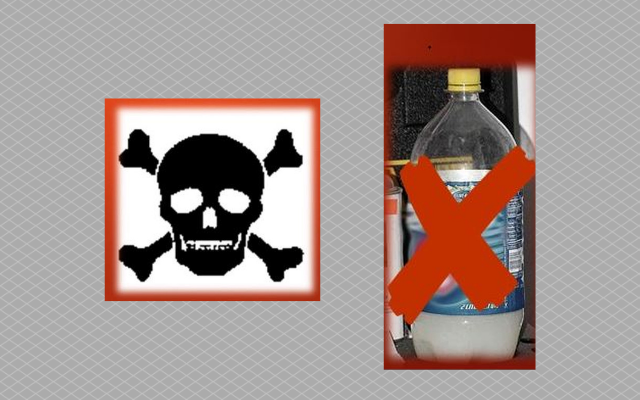
April 15, 2019
Lincoln, Neb. — New, federally required training now is available for certified applicators who use products that contain paraquat as an active ingredient.
The new training is in addition to certification for applicators of restricted use pesticides, say officials with the Nebraska Department of Agriculture (NDA) and Nebraska Extension’s Pesticide Safety Education Program (PSEP). The reason is paraquat requires extreme care when handling and applying.
The Environmental Protection Agency states the new restrictions are intended to help reduce accidental ingestion and other exposures. Since 2000, 17 deaths have been caused by accidental ingestion of paraquat. Many resulted from people illegally transferring the pesticide to beverage containers, with victims later drinking from the containers.
“Paraquat is so toxic that a single sip can be fatal and there is no antidote,” said Tim Creger, NDA Pesticide/Fertilizer Program Manager.
In addition to deaths by accidental ingestion, since 2000, three more deaths and many severe injuries have been caused by the pesticide getting onto the skin or into the eyes of those working with it.
“Wearing personal protective equipment (PPE) is extremely important when handling and applying paraquat,” said Clyde Ogg, PSEP extension educator. “Proper PPE for applicators includes goggles or other protective eyeware; a NIOSH-approved respirator with any N, R or P filter; chemical-resistant gloves; plus the usual fare of long-sleeved shirt, long pants, and shoes and socks.” Handlers must wear all of the previous PPE, plus chemical-resistant apron and face shield.
Products that contain paraquat dichloride as an active ingredient may be known to growers under brand names such as Gramoxone, Firestorm, Helmquat and Parazone.
“As an aggressive leaf desiccant, paraquat has become more popular with the onset of herbicide-resistant weeds such as Palmer amaranth,” Creger said. Applicators wearing backpack sprayers must be especially cautious because of the potential for leaks.
Ogg urged that the best advice still remains to read and follow the label directions on the product being used, keep product in its original packaging, and NEVER put product in any type of food container -- especially a drink container.
Companies are required to have newly labeled product in the market after Nov. 14, 2019, although some may produce and sell newly labeled product before that date.
When purchasing the newly labeled product:
- Product may ONLY be mixed, loaded, or applied by certified applicators who have successfully completed the paraquat-specific training before use
- http://usparaquattraining.com
- Application "under the direct supervision" of a certified applicator is NO LONGER allowed
- Training must be repeated every three years
The requirement for training is only one of several actions EPA has taken to prevent poisonings with new label changes, including:
- Restricting the use of all paraquat products to certified applicators only
- Certified Applicator Statement (for mixers, loaders, & applicators)
- Clarifying toxicity in English and Spanish language formats
- New graphics and statement on the label:
- “DANGER-ONE SIP CAN KILL” and skull and crossbones symbol on the container
- A “product package safety requirements sticker” affixed to the container
- A “counter card” reiterating the same important warning information to be distributed with every container
- Plans for closed system packaging for containers less than 120 gallons
It is also important to note that:
- EPA is allowing the sale of paraquat already in the channels of trade, so some paraquat sold this growing season may NOT have the new training requirement on the label.
- If the new training requirement is listed on the label of the product that applicators purchase, applicators MUST complete the training
- Growers who currently have a supply of paraquat that DOES NOT have the new labeling listing the required training ARE NOT required to complete the training.
- Pesticide registrants were to submit label changes and new product registrations for the closed system packaging by March 30, 2019, and will have 12 months from EPA’s label approval date to adopt the closed system packaging.
EPA’s approved training module was developed by paraquat manufacturers and the National Pesticide Safety Education Center. It may be accessed at: https://campus.extension.org/enrol/index.php?id=1660.
EPA’s Q&A and other information about paraquat is at: https://www.epa.gov/pesticide-worker-safety/paraquat-dichloride-training-certified-applicators.
Clyde OggPesticide Safety Education Program Educator
402-472-1632
cogg1@unl.edu Writer:
Cheryl Alberts
Pesticide Safety Education Program Coordinator
402-472-1696
calberts1@unl.edu







